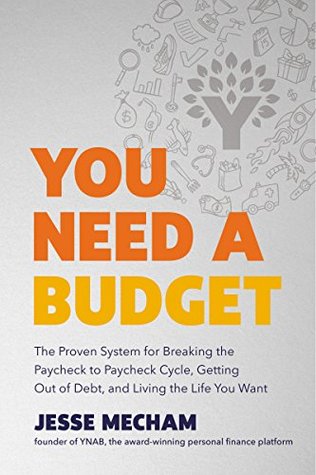More on this book
Community
Kindle Notes & Highlights
by
Jesse Mecham
Read between
January 9 - January 10, 2024
When you increase the time that passes between receiving your money and spending it, you’re more secure, more flexible.
Just make sure you don’t forecast future money. That cash will be great when it hits your account, but you’re only concerned with making sure the money you have today gets you closer to your goals.
Scarcity is simply that feeling of wishing there were more.
Forecasting has you “budgeting” money you don’t have and pretending you know exactly what your expenses will be three months from now.
Budgeting has you prioritizing the money you have—and leaves you feeling confident because you know it’s one hundred percent based in reality.
Budgeting helps you see where your money is truly going so you can reroute it if it’s not going in the places you want.
If guilt haunts you it’s usually because: 1. You know in your gut that a bigger priority needs more of your attention; or 2. You’re letting other people’s expectations of how you should live your life color your choices.
You won’t feel confident about your money decisions unless you dig deep to figure out what really matters
With budgeting, on the other hand, you’re mapping out your spending decisions before they happen.
As the anxiety dwindles, something much better takes its place: peace. Imagine paying your bills the moment they land because the money is just there, actually waiting for the bill. (Personally, I get a little thrill when I come home
to a pile of bills I can pay on the spot.) Imagine shopping without guilt, saving without drudgery, and feeling that you can literally plan to live in whatever way makes you happy. Your crazy dreams suddenly don’t seem so crazy when you have a way to make them real. This, to me, is financial freedom. It’s a way of never having to worry about money even if you don’t have endless piles of it.
Forget future money; use today’s money to write your future.
fund your obligations before you do anything else.
Just make sure you’ve set aside enough to keep food in your fridge, a roof over your head, and the collection agencies off your porch.
If you’re struggling between a few options, stop to do some deep prioritizing. What’s more important to you? Experiences? Take the vacation. Solidity? Upgrade the yard. Inflating those savings accounts? Put some dollars aside.
Budgeting—and prioritizing—is like a muscle you exercise. The more you do it, the better you’ll be at it.
It may be tempting to follow someone else’s instructions, but they don’t know a thing about you or your life. Trust yourself—you have what it takes to figure out what’s best for you.
Credit cards are not the problem—it’s how we use them. You’re fine to use credit cards as long as you use them to spend the money that’s already in your bank account. Money you’ve already budgeted.
The approach is simple: only charge something if that money is already in the bank and it’s budgeted toward that expense. When you do this, you’re using your credit card only because you want to (yay, points!), not because you have to (I can pay this bill as soon as my next check arrives!).
And you can pay the bill any day of the month, because the money is always there. This approach also ensures that any credit card balances you might have don’t grow. Your credit card payment will really have two parts: your debt paydown plus whatever you spent this month. It’s the only way you can keep using credit cards without sinking deeper into debt.
Also consider using cash or debit until your credit card balance is gone. Don’t use any credit card that carries a balance—just focus on paying it down.
If you’re feeling discontent about your money, even after an income bump, it’s likely because your money is not lining up with what’s important to you.
Also remember that your emotions are often a good measure of what you should tackle first,
it’s okay to change your budget.
As long as you keep moving toward them, you’re succeeding.
That’s how your budget works. You work only with the money you already have,
Rule Three is just a matter of looking at the big picture of all your money and asking: What do I want my money to do for me? Then you start moving it around. You make a new plan. All that moving is the reason we call Rule Three “Roll with the Punches.”
Age your money long enough, and the stress won’t even be in your line of sight.
The bigger the gap between the time you put in the cereal and the time you take it, the more security, flexibility, and options you’ll have if the unexpected were to happen. You want that cereal to age for as long as possible before you use it.
Money’s “age” is based on the gap of time between when you earned the money (cereal in) and when you spend the money (cereal out). If
That relief comes when you don’t need to use your money right away. This buys you time—time to make decisions, time to adjust, time to correct course. The longer you can wait to use your money, the more control you have. The less you can, the more circumstances control you.
My issue with debt is that it restricts your cash flow. It keeps money away from your priorities as you pay hundreds (sometimes thousands!) of dollars a month for something that’s already happened.
The point is to keep your spending habits the same even when your income increases.


